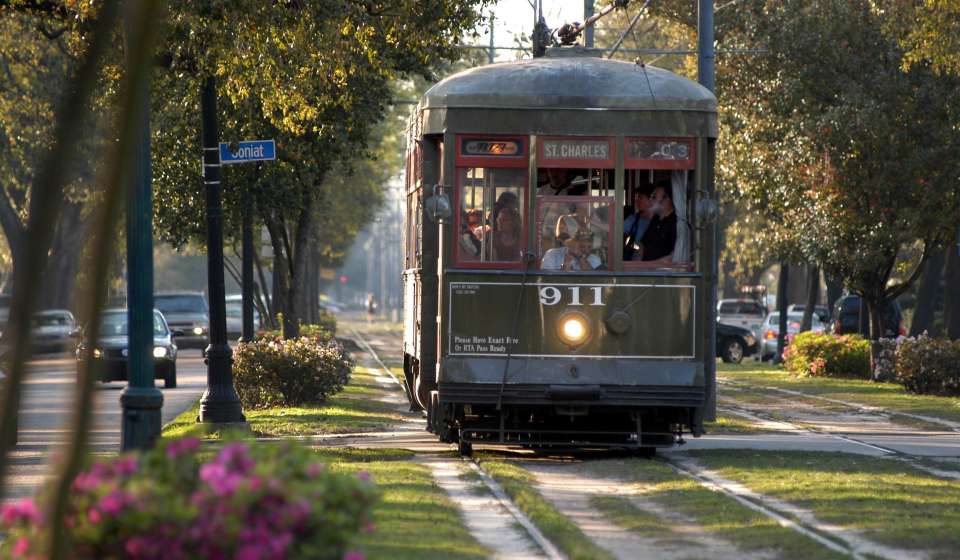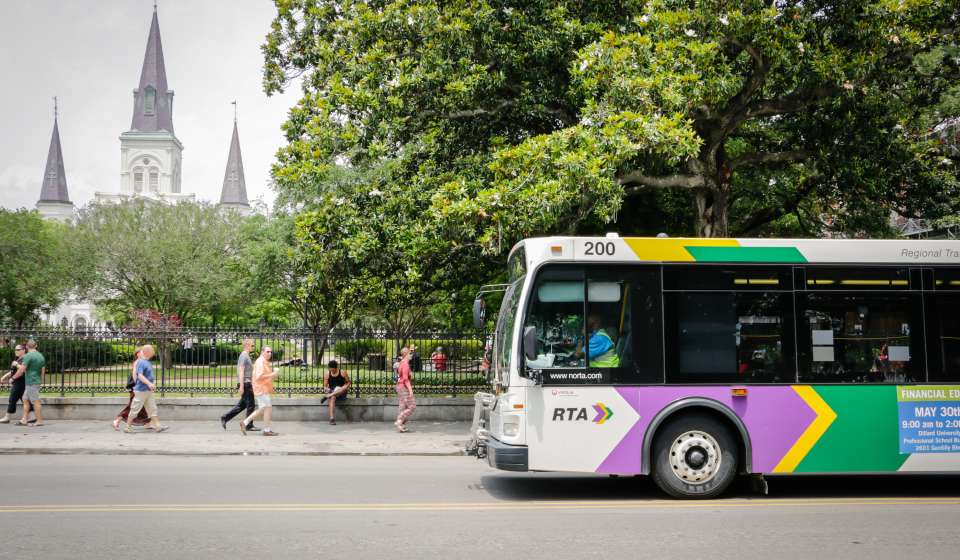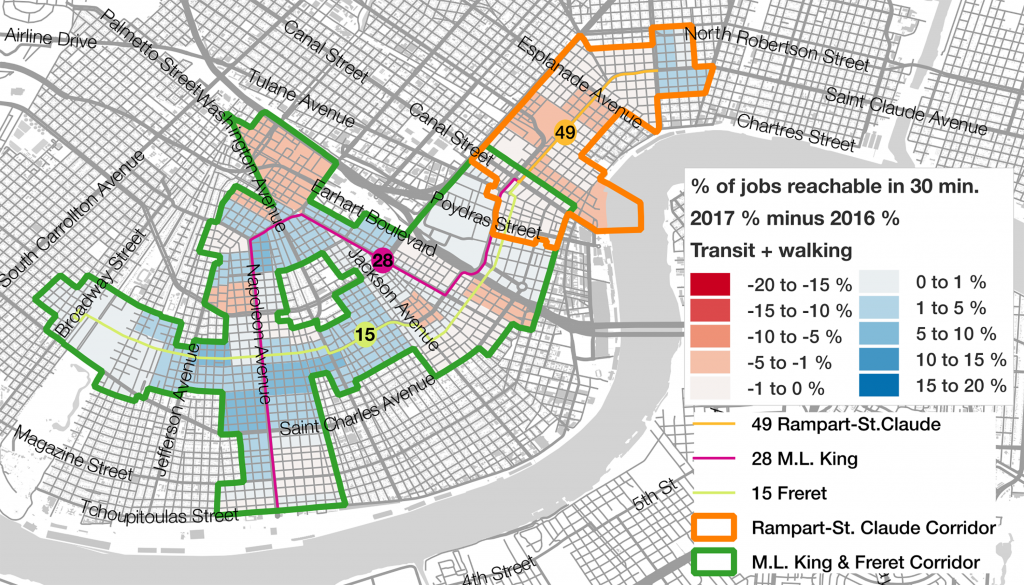
Photo of St. Charles Streetcar Line (Photo by: Cheryl Gerber)
The hardest part about my job this summer was the commute. As a person without a car, I dreaded the idea of waiting for and walking to the streetcar in New Orleans summer humidity before each shift. Especially since the trolley never comes on time and is impossible to rely on if you’re in a hurry. Sometimes, my friends would Uber to and from work, costing them almost an hour’s worth of pay each time. One of my housemates had a car, but we all had different work schedules, and I envied how seamless her commute to work was, she didn’t have to deal with the heat and it took half the time as mine did for the same amount of distance. Since this summer, I’ve had the privilege of being able to get my own car. It has made a world of a difference, instead of leaving for my 3:30 shift at 2:40, I leave at 3:15, and I’ve gotten the opportunity to explore so many more areas of New Orleans that I had not been able to previously because I could not afford the $15 Uber or had the time to take the over one hour trip from Uptown to the Bywater. I could no longer imagine being able to sufficiently live in this city without a car. I had considered for the first time how much New Orleans’ transportation systems dictated people’s work lives and lifestyles.
After Hurricane Katrina, the city was given $130 million dollars from the federal government to recover their transportation system, but it wasn’t enough to fully repair the damage that had been done or maintain the new systems that were put in place. Additionally, in a place like New Orleans with immense economic segregation and no law mandating a transport system for citizens to jobs, funding will usually be put into areas that are highly tourist populated or more affluent. As a result, outlying areas, which are made up predominantly of low-income and non-white residents, remain disconnected from central parts of the city. For example, the Lower Ninth Ward only has two NORTA (New Orleans Regional Transit Authority) lines in that area, both which are buses. Both lines stop through the city’s most commercial areas like the French Quarter and ends in the Central Business District, but do not provide direct access to areas like Mid-City or Uptown, places with many potential job opportunities. Not only is there a lack of access to transportation within the Orleans parish, but there are also little to no regional connections in areas like Jefferson and Metairie. Furthermore, many jobs are out of reach for many residents. Without cars or accessible transportation, people are losing the opportunity to find jobs and maintain careers that provide living support for them and their families.
On the contrary, wealthier neighborhoods like Uptown and the Garden District have access to multiple central parts of the city through both bus lines and the streetcar. New Orleans only has four streetcar lines, all saturated in wealthier neighborhoods or tourist heavy routes. This is evident that the New Orleans Transit Authority views the trolley as a leisurely activity rather than a public transportation system to depend on for one’s entire lifestyle. Additionally, improvements that are put in place, such as to the Rampart/St. Claude Streetcar, mainly help residents in central neighborhoods, continuing to silo residents in outlying areas.

Photo of RTA bus in front of Jackson Square (Photo by: Rebecca Todd)
There is such a disparity in access to transportation that transit advocacy groups have been created like RIDE New Orleans. The organization’s main goal is to provide and fight for reliable and equitable transportation with full access to job opportunities and healthcare for the entire city. In their 2019 State of Transit report, it was found that “The average transit-reliant New Orleanian can still only reach 12 percent of the region’s jobs in 30 minutes-or-less while the average car-owning New Orleanian has robust access to economic opportunity – able to reach 89 percent of the region’s jobs in that time period.” With the minimum wage in Louisiana being only $7.25 per hour, it can be extremely difficult for someone with this income to purchase their own car, along with paying for housing, food, healthcare, and for other family members. The $1.25 fare is a much more affordable option for most workers, but instead they then must go through grueling commutes that include high temperatures and lack of air conditioning with long wait times and transfers. Time spent waiting for the streetcar or bus is time that could instead be spent taking care of a family member, studying for school or another hobby. New Orleans is prioritizing their wealthier residents and tourist community rather than their low-income workers who need efficient public transportation the most.

Graph from RIDE New Orleans 2017 State of Transit (photo by: RIDE New Orleans)
RIDE New Orleans has three main initiatives they work on to improve the transportation system for all residents. The first is making sure there is frequent and reliable transportation for everyone and ensuring that improvements are community-supported and help connectivity. Secondly, there needs to be seamless transit between regions that can residents from any area where they need to go in a reasonable amount of time. Lastly, RIDE demands that transportation be easy to use, including better signage and reliable real time for scheduling and transfers.
As a grassroots organization, RIDE New Orleans is committed to building a bigger voice for public transit riders, driving the conversation to improve the transit network and lobbying with elected officials to make targeted campaigns that win tangible change for the transportation system. Though they have put in many efforts to improve the transit in New Orleans, there is still much change that needs to be done to ensure that residents have reliable public transportation that does not dictate every facet of their lifestyle and work opportunities.
 NOLAbeings
Multimedia artist Claire Bangser created NOLAbeings as a portrait-based story project that marries...
NOLAbeings
Multimedia artist Claire Bangser created NOLAbeings as a portrait-based story project that marries...
 Data corner: Adobe Suite (create a PDF, social media graphic, presentation, edit a photo and video
Data corner is where you go to work with analytics and top tech skills. It takes on everything from PERL and SQL to Canva and Sprout Social.
Data corner: Adobe Suite (create a PDF, social media graphic, presentation, edit a photo and video
Data corner is where you go to work with analytics and top tech skills. It takes on everything from PERL and SQL to Canva and Sprout Social.
